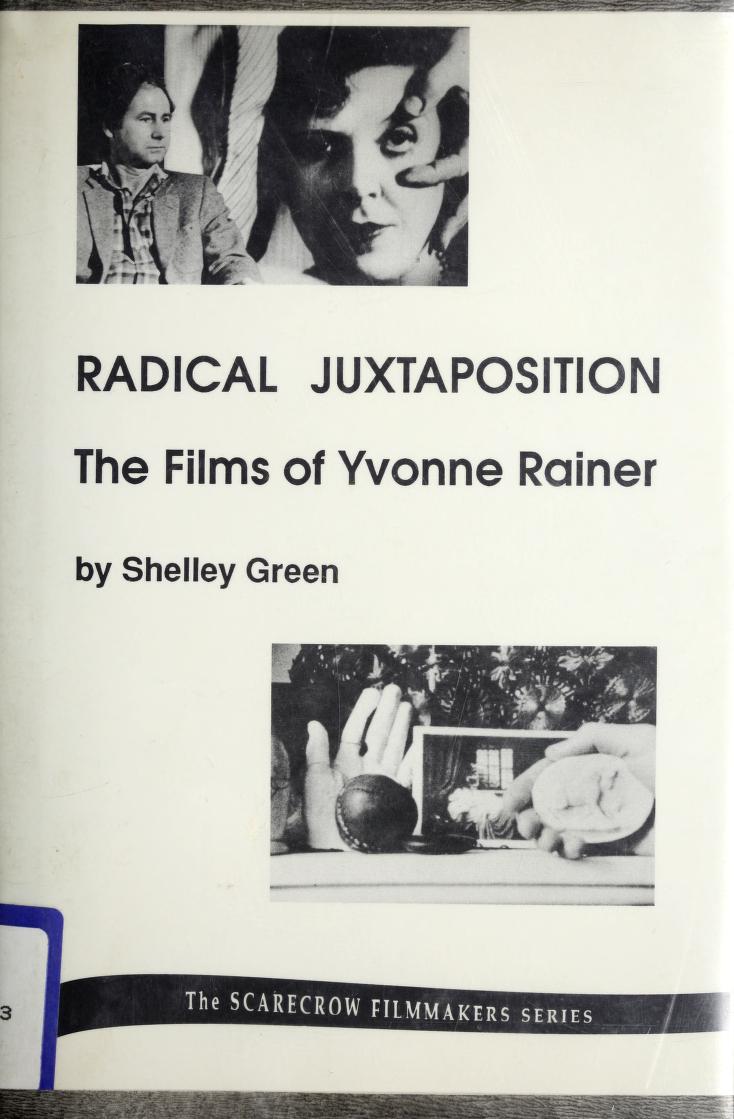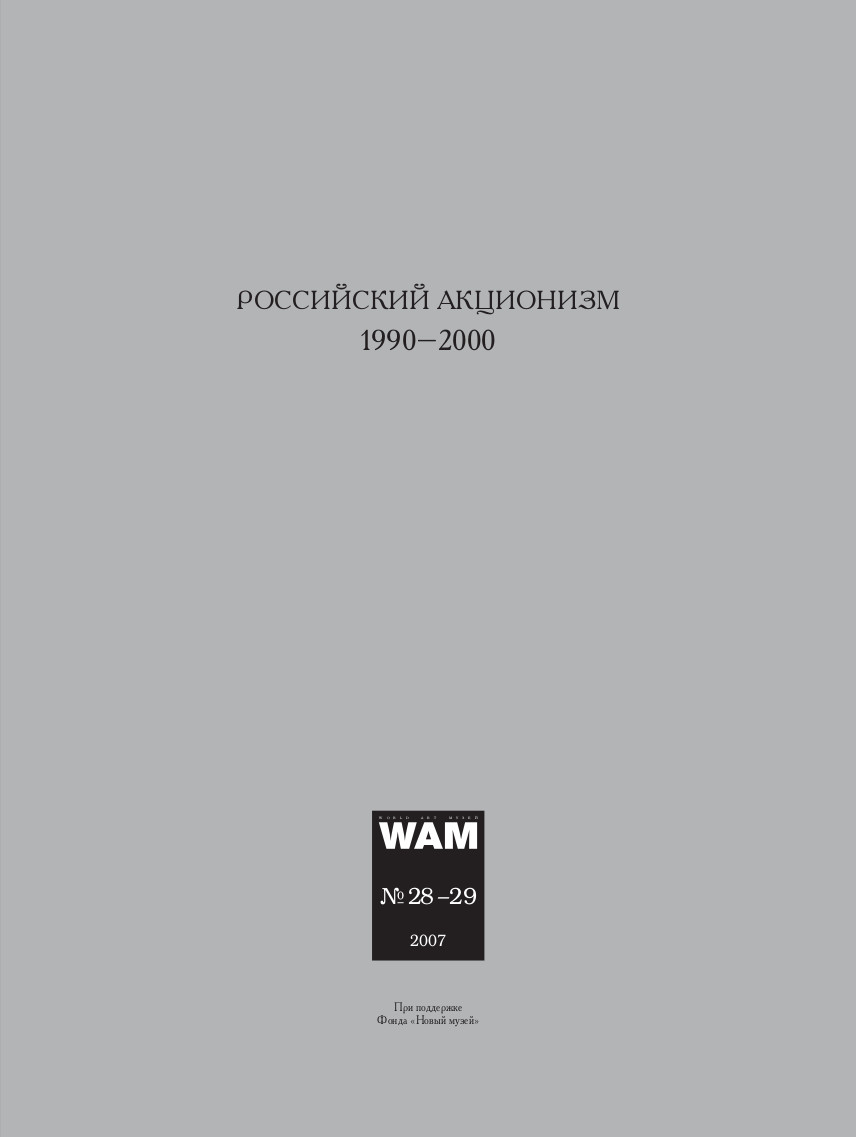Shelley Green: Radical Juxtaposition: The Films of Yvonne Rainer (1994)
Filed under book | Tags: · avant-garde, cinema, dance, experimental film, film, film criticism, gender, performance

“This volume examines the work of one of the central figures of the avant-garde from her first feature-length film in 1972, Lives of Performers, through Film About a Woman Who… (1974), Kristina Talking Pictures (1976), Journeys from Berlin/1971 (1980), The Man Who Envied Women (1985), to Privilege (1990). The comprehensive study surveys critical reaction and includes Rainer’s critical writings, photos, full biographical information, a complete filmography and bibliography.
The book also investigates dominant structural elements which enliven Rainer’s filmic texts: her complex and disjunctive use of language, speech, repetition, interpolated texts, fragmentation, self-conscious camera movement, autobiography and the formulation of alternative narrative codes. A focal point is the unique relationship established between the filmmaker and the spectator.
Rainer’s narrative strategies have been considered in a radical political context; the author specifically analyzes Rainer’s aggressive reexamination of form as it contributes to the politics of the personal and the political. Resonances created in complex construction of sound, image, editing, characterization, camera movement, and the obliteration and calculated reevaluation of these techniques often directly lead to a new construction of the female subject as well as the female spectator. By creating a cinema that may both construct and include its audience, Rainer’s work has vast implications. The author develops this significant aspect and addresses issues of race, age, and class, especially in later films.” (from the back cover)
Publisher Scarecrow Press, Metuchen, N.J., 1994
The Scarecrow Filmmakers Series, 41
ISBN 0810828634, 9780810828636
174 pages
Commentary: Strictly Film School (2005).
PDF (20 MB, no OCR)
See also Rainer’s films on UbuWeb.
Comment (0)Hans-Thies Lehmann: Postdramatic Theatre (1999–) [PL, EN, BR-PT, SK, RO]
Filed under book | Tags: · drama, history of theatre, performance, theatre, theory

“This is a study of the new theatre forms, which has become a key reference point in international discussions of contemporary theatre.
In looking at the developments since the late 1960s, Lehmann considers them in relation to dramatic theory and theatre history, as a response to the emergence of new technologies, and as an historical shift from a text-based culture to a new media age of image and sound.
Engaging with theoreticians of ‘drama’ from Aristotle and Brecht, to Barthes and Schechner, the book analyzes the work of recent experimental theatre practitioners such as Robert Wilson, Tadeusz Kantor, Heiner Müller, the Wooster Group, Needcompany and Societas Raffaello Sanzio.”
First published as Postdramatisches Theater, Verlag der Autoren, Frankfurt am Main, 1999.
English edition
Translated and with an Introduction by Karen Jürs-Munby
Publisher Routledge, London, 2006
x+214 pages
Reviews: Marvin Carlson (Theatre Research International, 2006), Iva Rosanda-Žigo (Fluminensia, 2006, CR), Denise Varney (Performance Paradigm, 2007), Elinor Fuchs (TDR, 2008), Jeanne Wilcoxon (Theatre Topics, 2008).
Teatr postdramatyczny (Polish, trans. Dorota Sajewska & Małgorzata Sugiera, 2004, pp 1-99, 41 MB)
Postdramatic Theatre (English, trans. Karen Jürs-Munby, 2006)
Teatro pós-dramático (BR-Portuguese, trans. Pedro Süssekind, 2007, 38 MB, via)
Postdramatické divadlo (Slovak, trans. Anna Grusková & Elena Diamantová, 2007, 16 MB, via)
Teatrul postdramatic (Romanian, trans. Victor Scoradeţ, 2009)
Andrey Kovalev: Russian Actionism, 1990-2000 (2007–) [RU, EN]
Filed under book | Tags: · 1990s, action art, art, art criticism, contemporary art, happening, performance, performance art, politics, russia

A survey of 450 performances, actions and happenings held in Moscow, St. Petersburg, Yekaterinburg and elsewhere. Descriptions and photo documentation are accompanied by press coverage and testimonies of participants and witnesses.
A ten-page English summary published in Artchronika magazine is introduced as follows:
“The phrase “performance in the 1990s” immediately evokes several images: Oleg Kulik slaughtering a pig at Regina Gallery; Anatoly Osmolovsky sitting on the shoulder of the Mayakovsky monument; Oleg Kulik again, this time attacking passers-by like a rabid dog; Alexander Brener masturbating on the diving board at the Moscow swimming pool or calling out Boris Yeltsin to fight on Red Square; the barricade erected on Nikitskaya Ulitsa; members of the Radek group on top of Lenin’s mausoleum; the crucifixion of Oleg Mavromatti; and so on. These stories have become pure myth, retold with breathy excitement and longing for glory days lost to the past, or cited in various criminal court cases.”
Special issue of WAM (World Art Музей), 28-29, Moscow, 2007.
ISSN 1726-3050
416 pages
English excerpts
Published in Artchronika, Spring-Summer 2008, pp 108-117
Российский акционизм. 1990-2000 (Russian, 2007, 21 MB)
Gestures of an Era, or the Era of Gestures (English, 2008)

